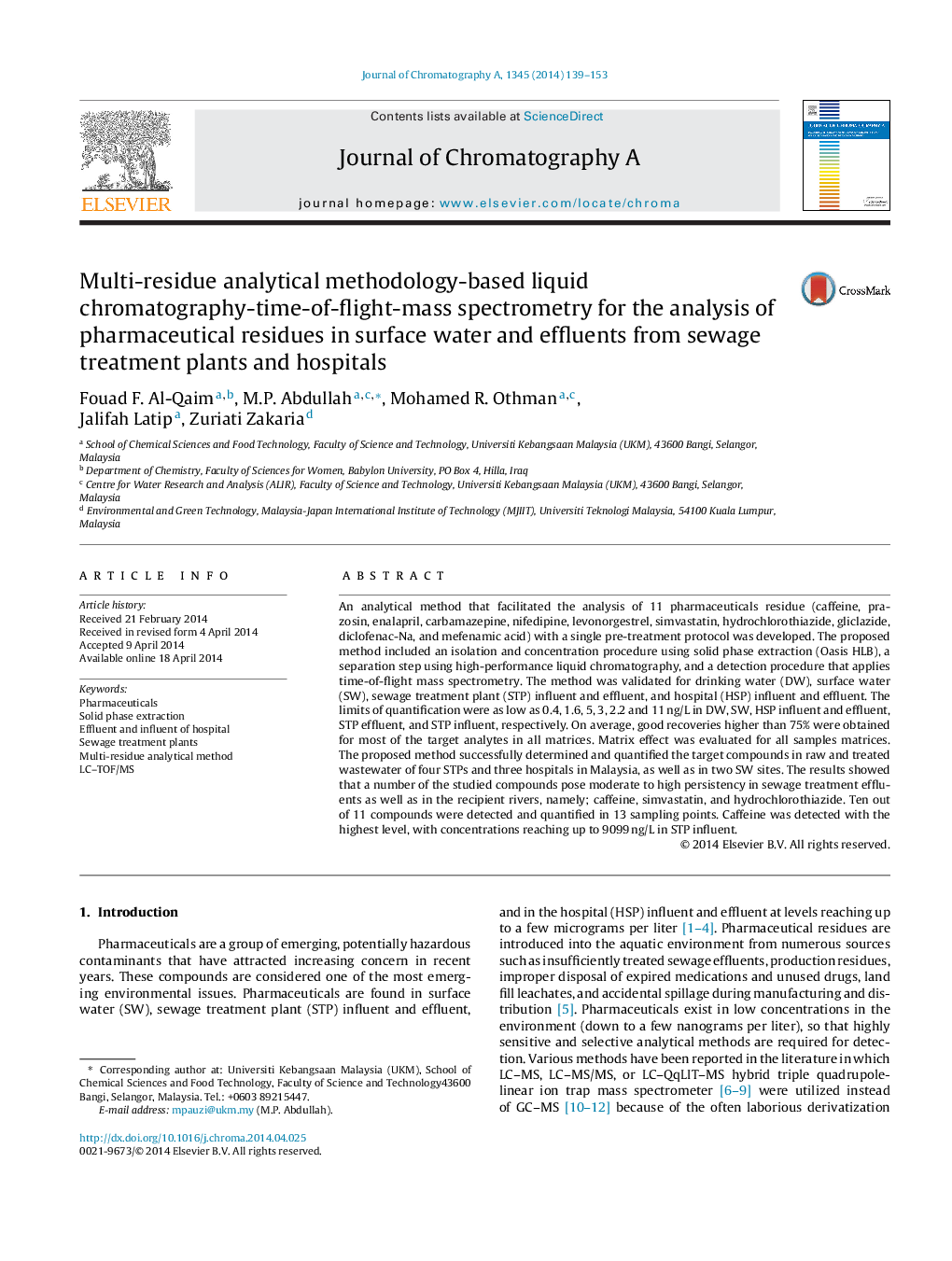| Article ID | Journal | Published Year | Pages | File Type |
|---|---|---|---|---|
| 1199527 | Journal of Chromatography A | 2014 | 15 Pages |
•Parameters affecting the proposed SPE and LC–ESI–TOF/MS method were investigated and optimized.•The method was used successfully for the extraction of all pharmaceuticals studied from different water samples.•High accuracy was observed using TOF mode with varying Daltonic values of mass.•The new method successfully detected 10 out of 11 studied compounds in water samples.
An analytical method that facilitated the analysis of 11 pharmaceuticals residue (caffeine, prazosin, enalapril, carbamazepine, nifedipine, levonorgestrel, simvastatin, hydrochlorothiazide, gliclazide, diclofenac-Na, and mefenamic acid) with a single pre-treatment protocol was developed. The proposed method included an isolation and concentration procedure using solid phase extraction (Oasis HLB), a separation step using high-performance liquid chromatography, and a detection procedure that applies time-of-flight mass spectrometry. The method was validated for drinking water (DW), surface water (SW), sewage treatment plant (STP) influent and effluent, and hospital (HSP) influent and effluent. The limits of quantification were as low as 0.4, 1.6, 5, 3, 2.2 and 11 ng/L in DW, SW, HSP influent and effluent, STP effluent, and STP influent, respectively. On average, good recoveries higher than 75% were obtained for most of the target analytes in all matrices. Matrix effect was evaluated for all samples matrices. The proposed method successfully determined and quantified the target compounds in raw and treated wastewater of four STPs and three hospitals in Malaysia, as well as in two SW sites. The results showed that a number of the studied compounds pose moderate to high persistency in sewage treatment effluents as well as in the recipient rivers, namely; caffeine, simvastatin, and hydrochlorothiazide. Ten out of 11 compounds were detected and quantified in 13 sampling points. Caffeine was detected with the highest level, with concentrations reaching up to 9099 ng/L in STP influent.
